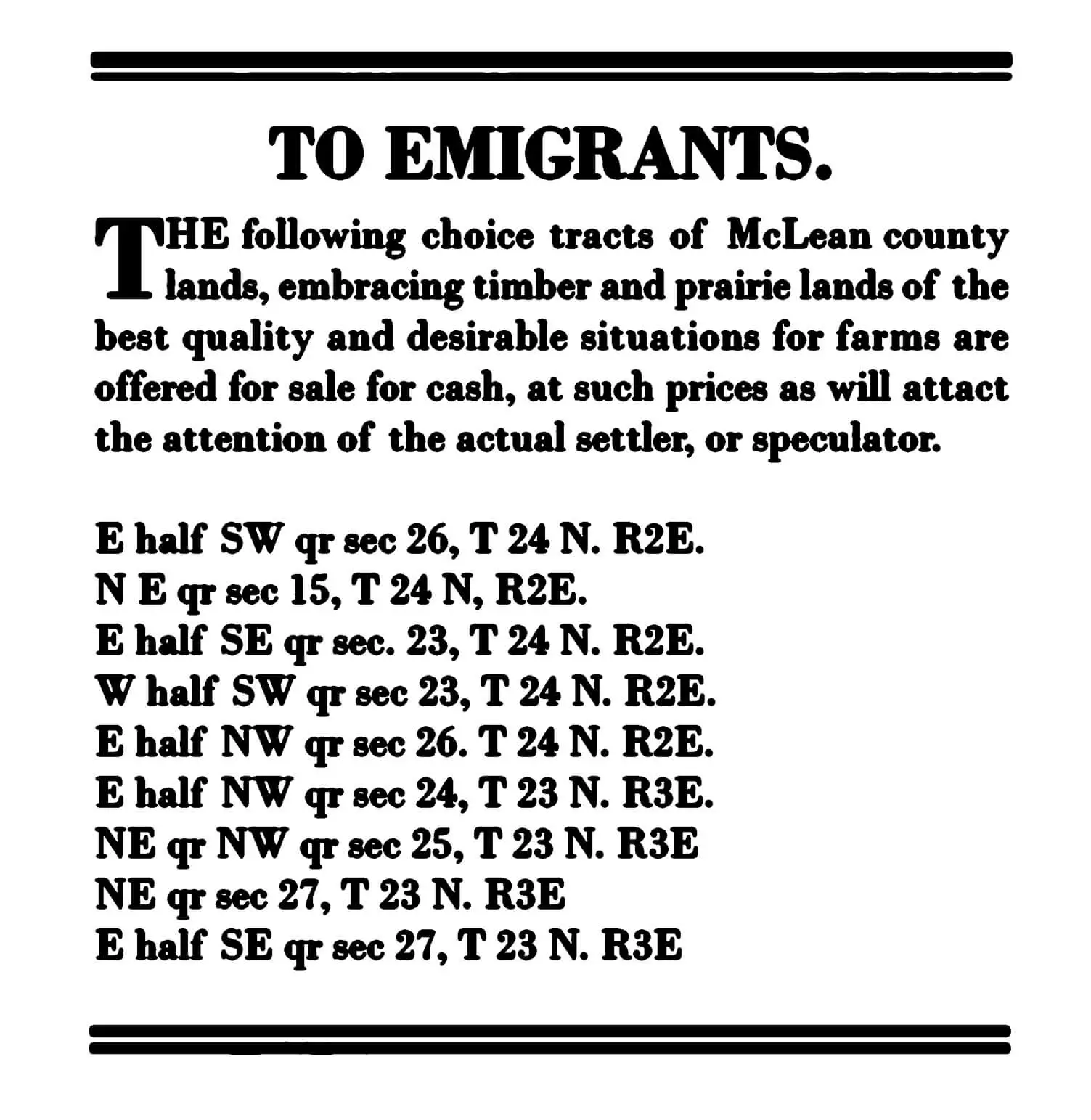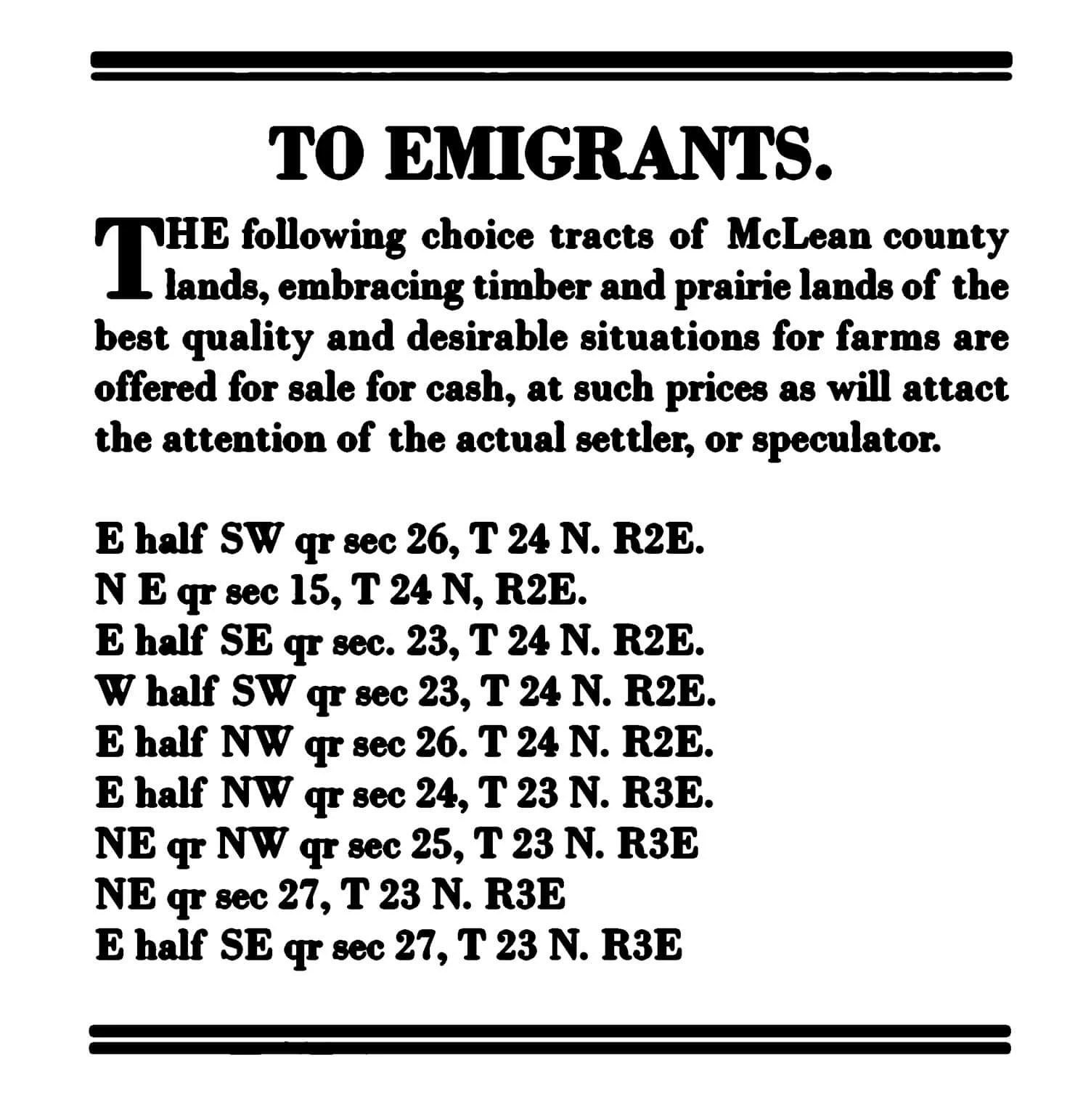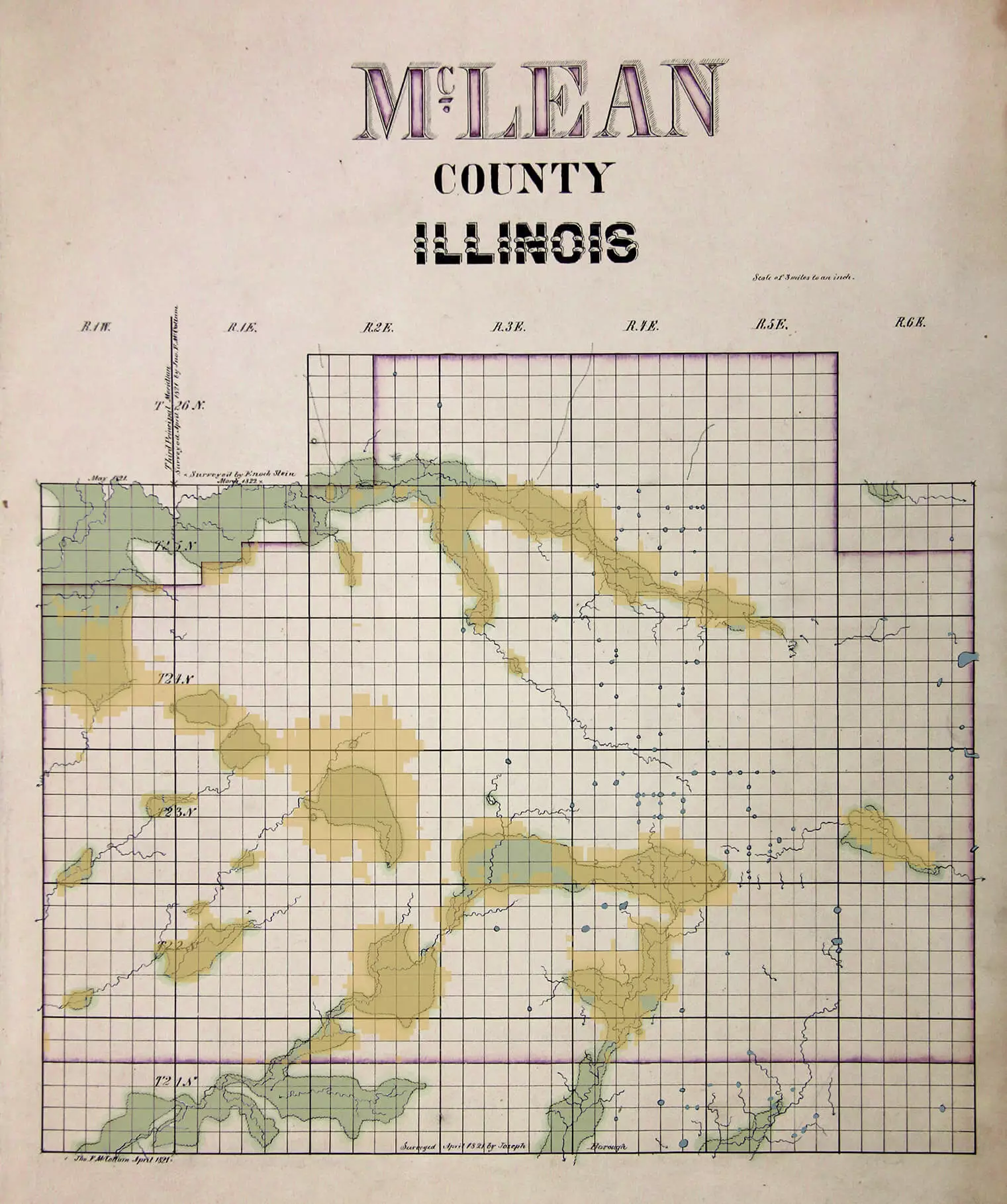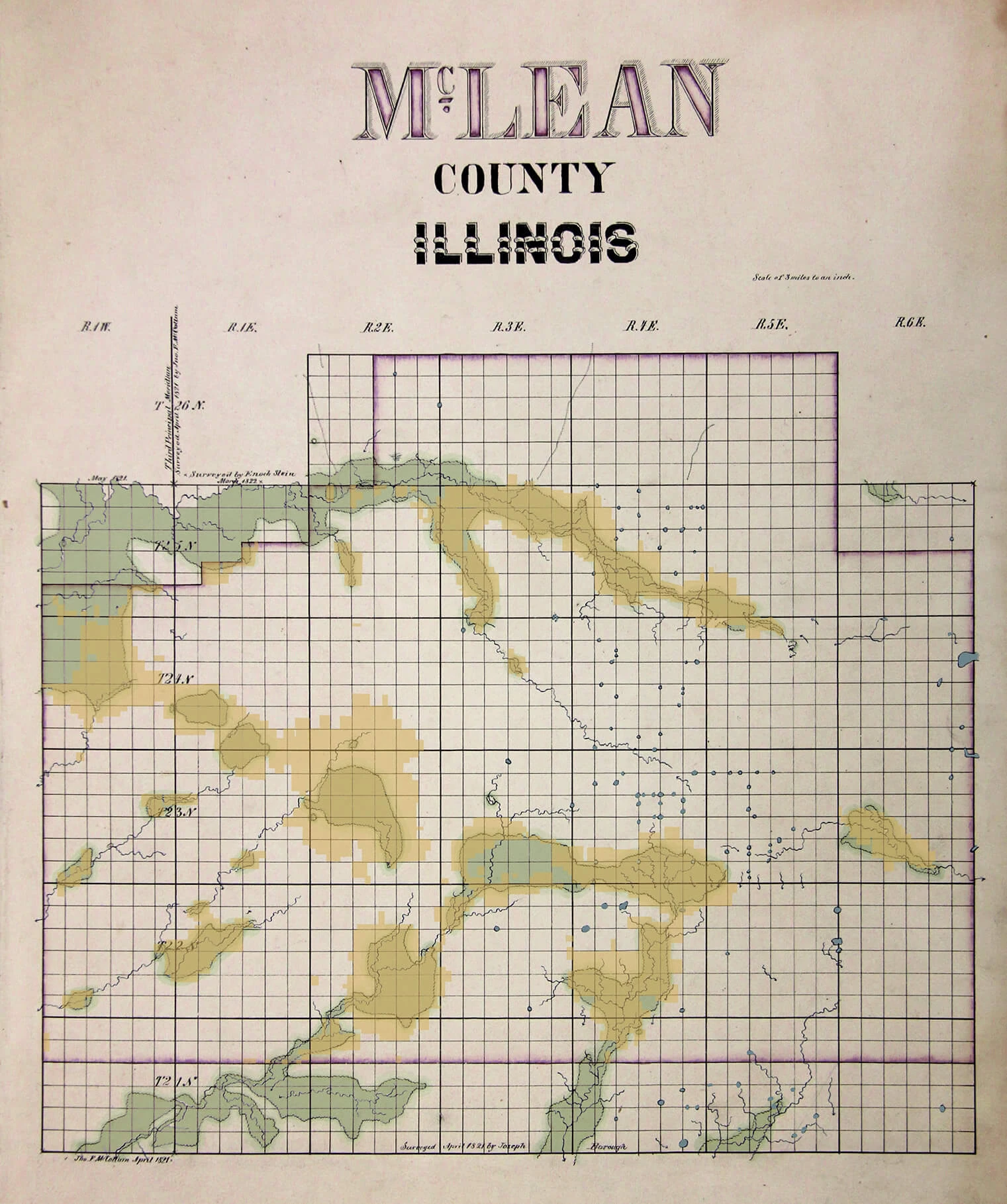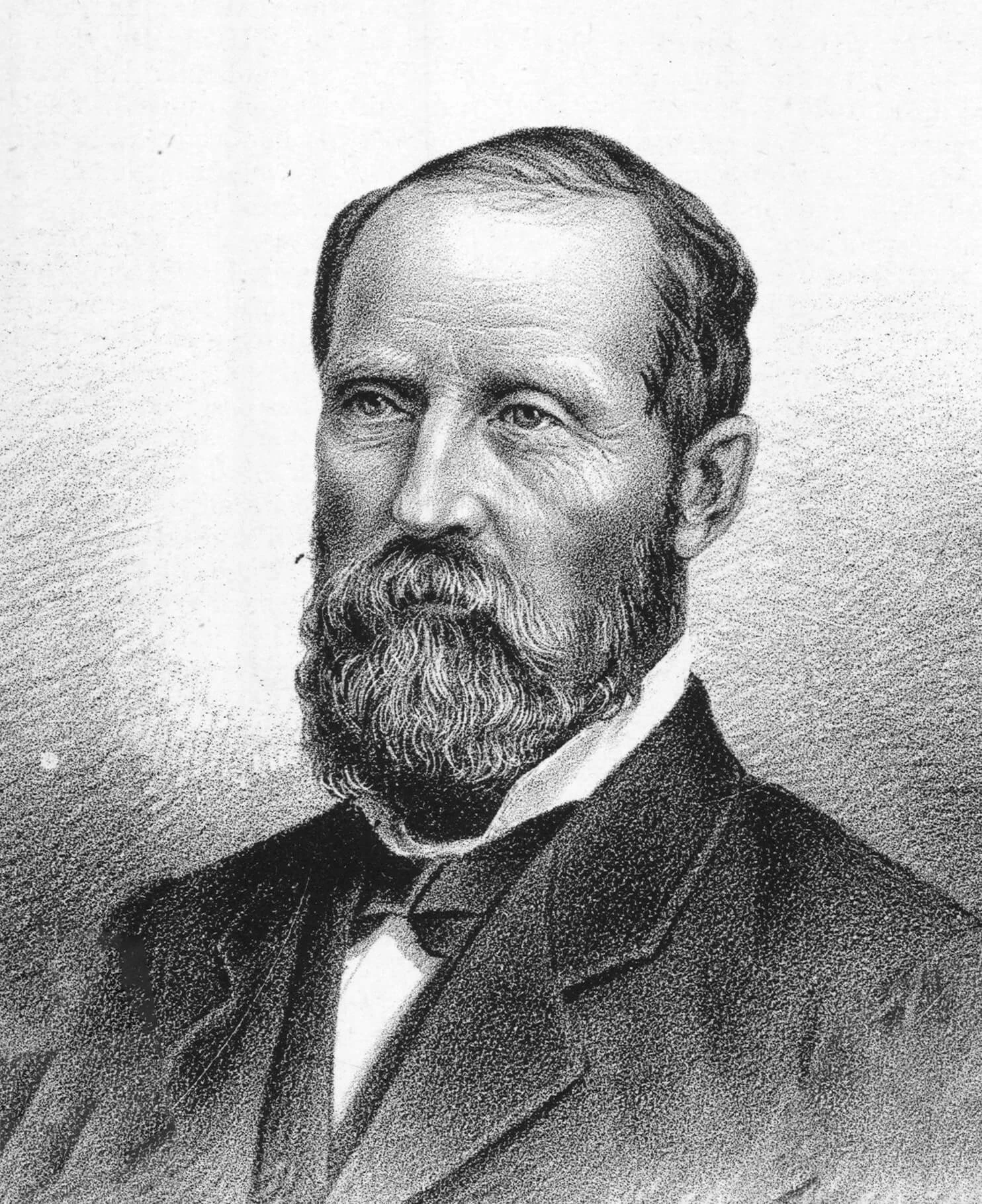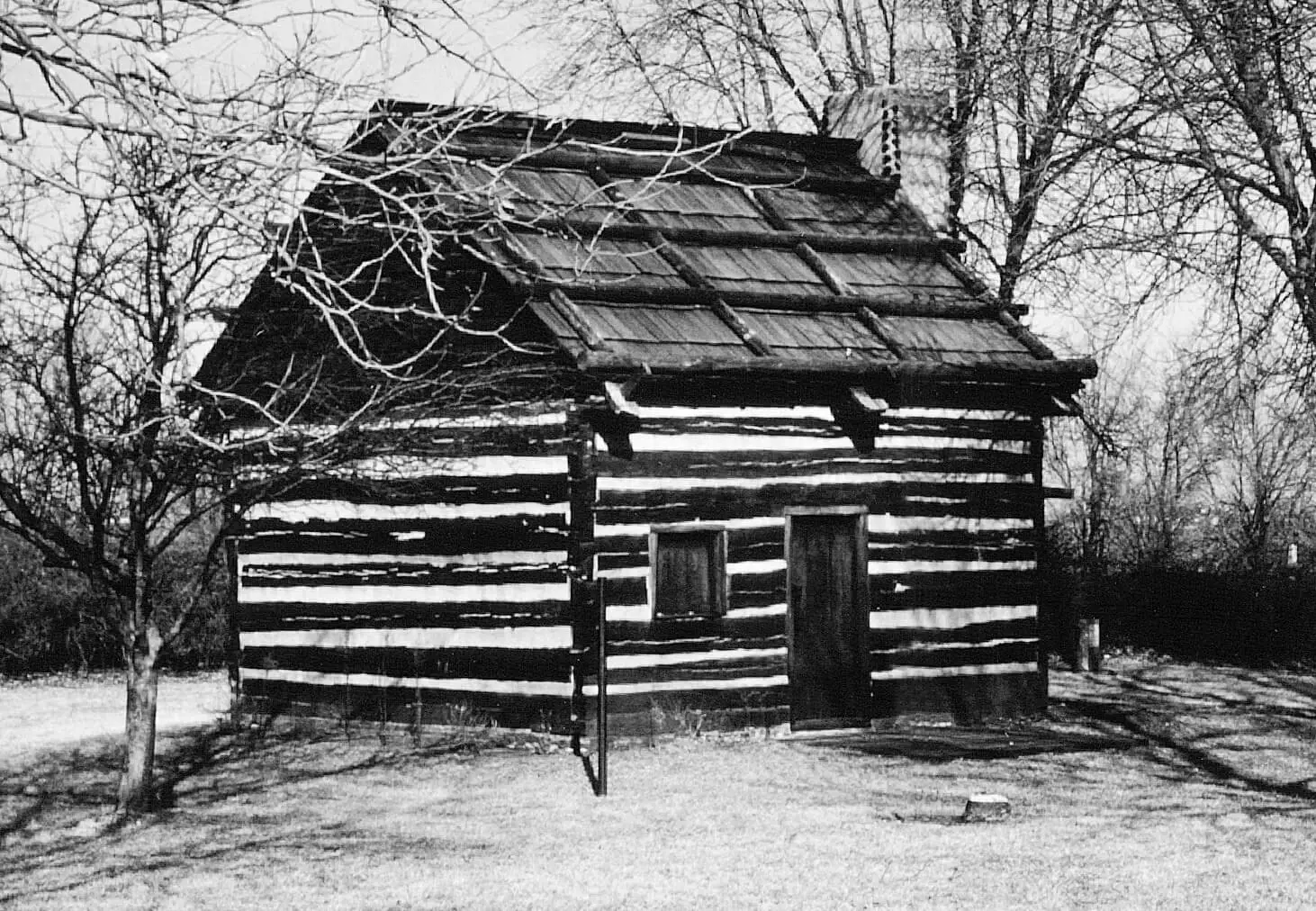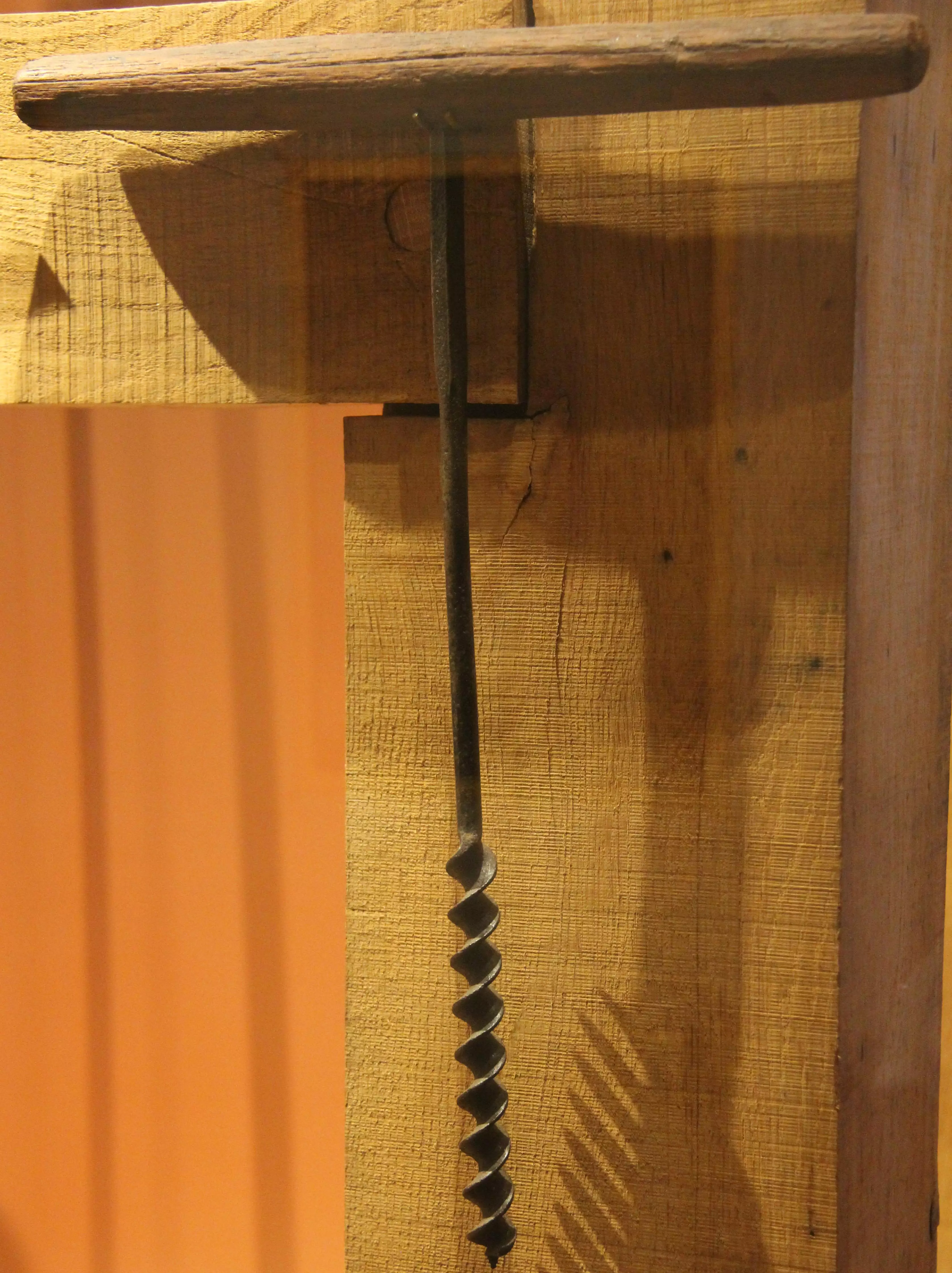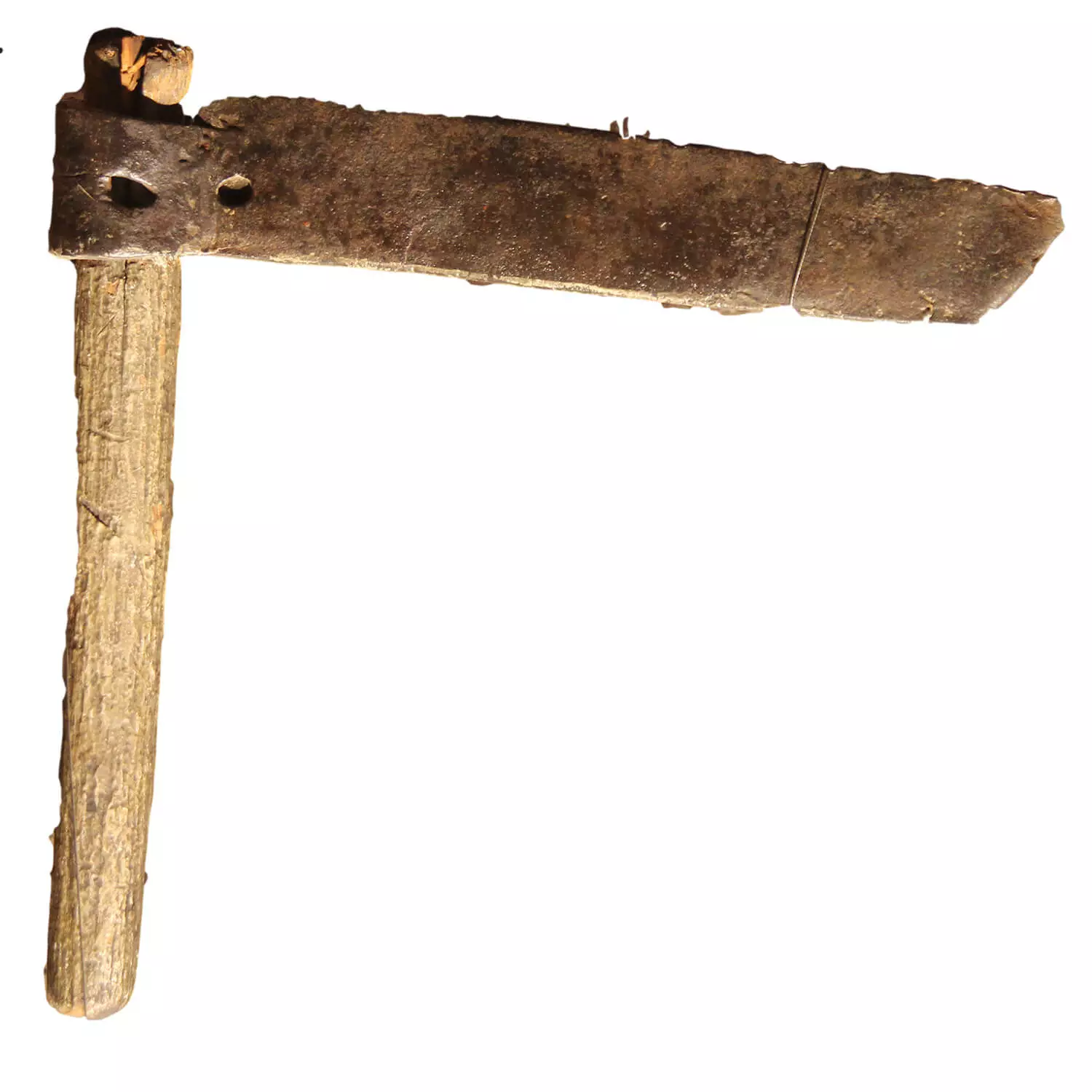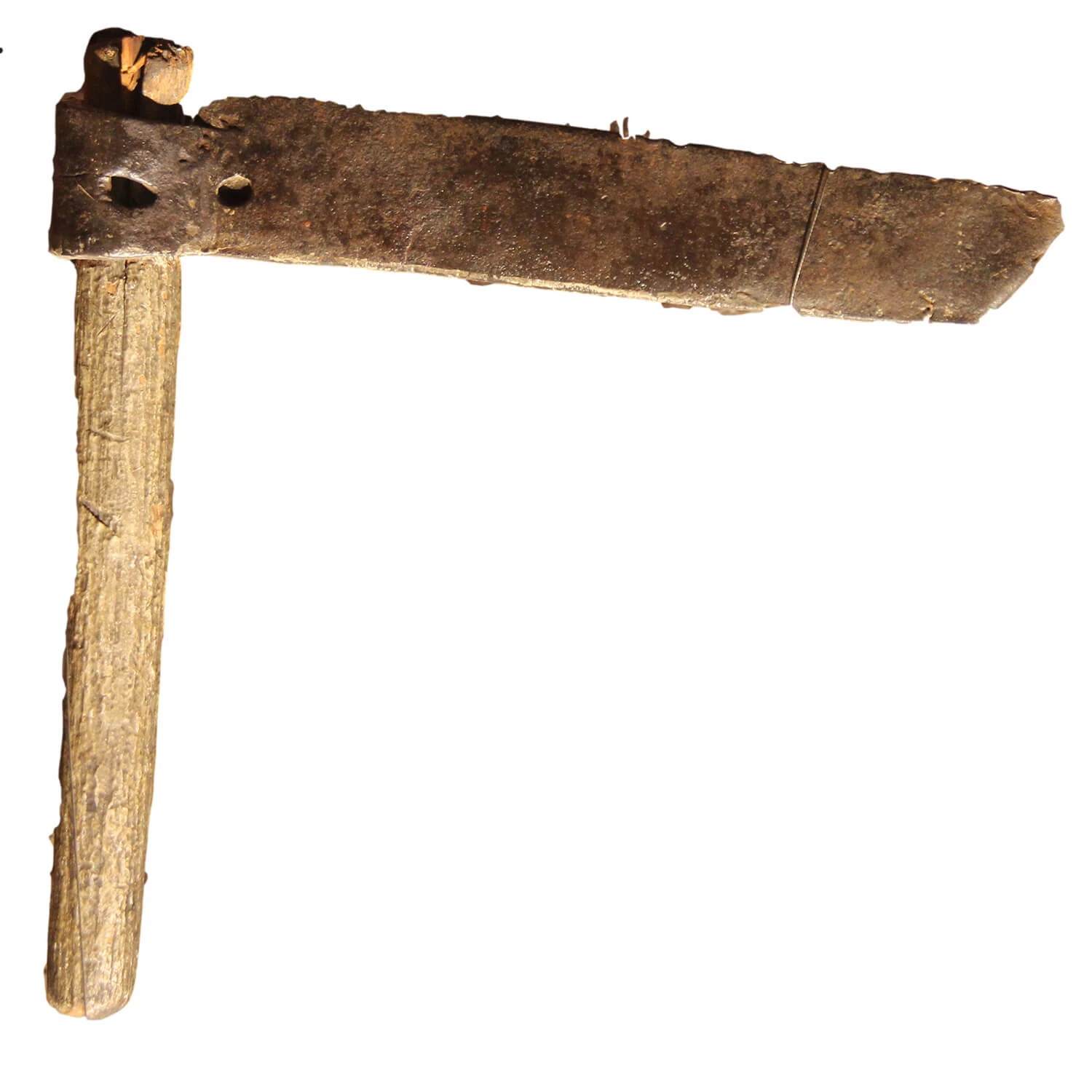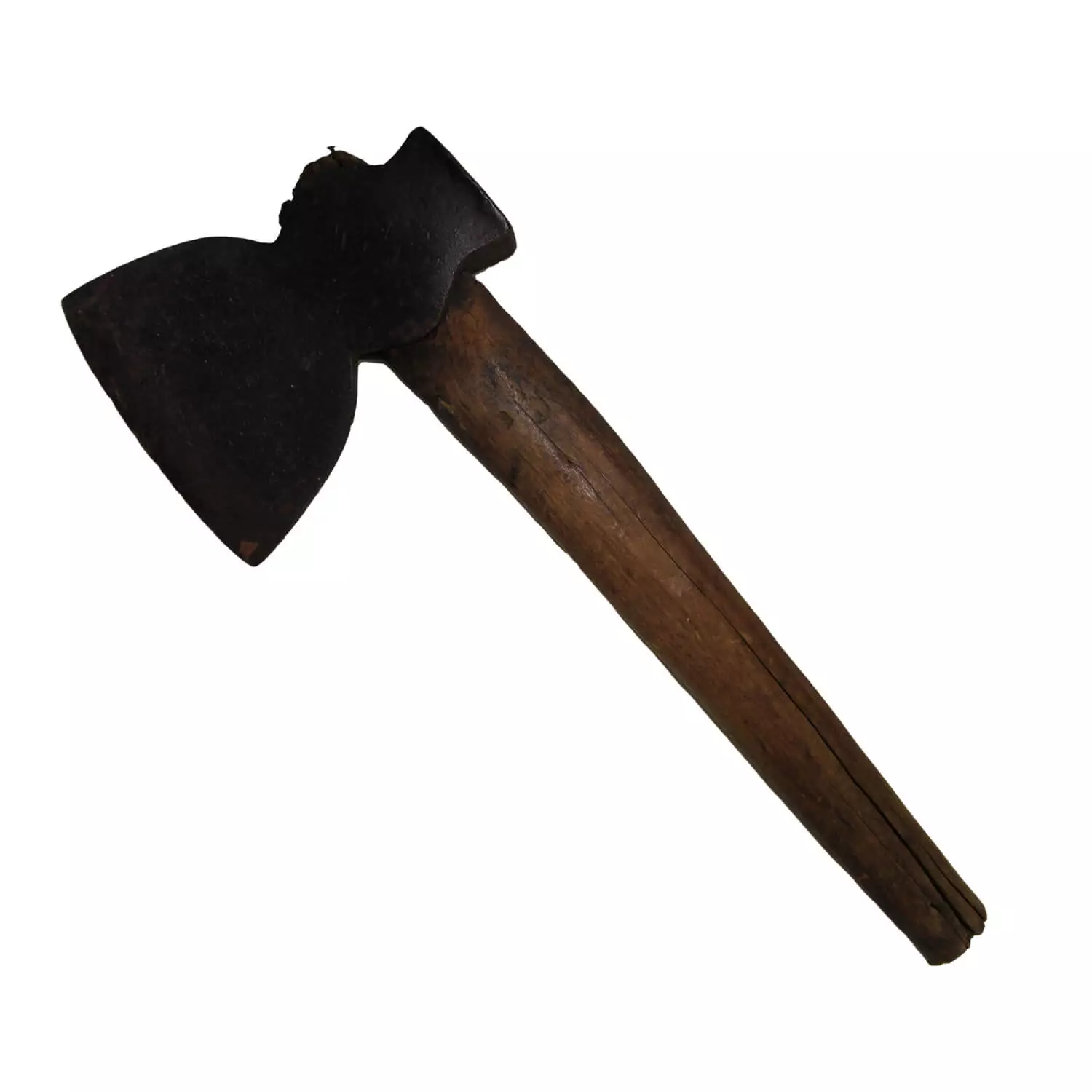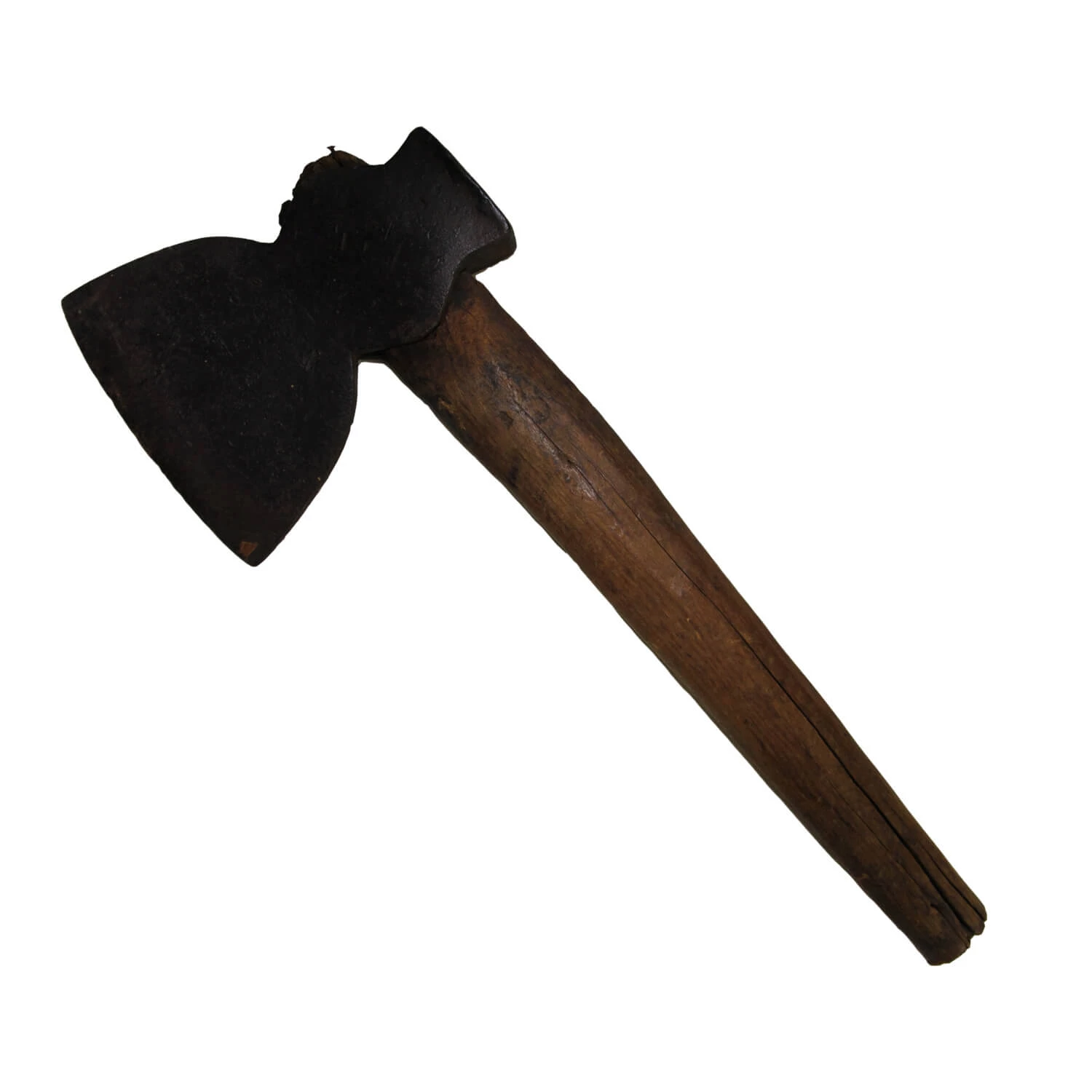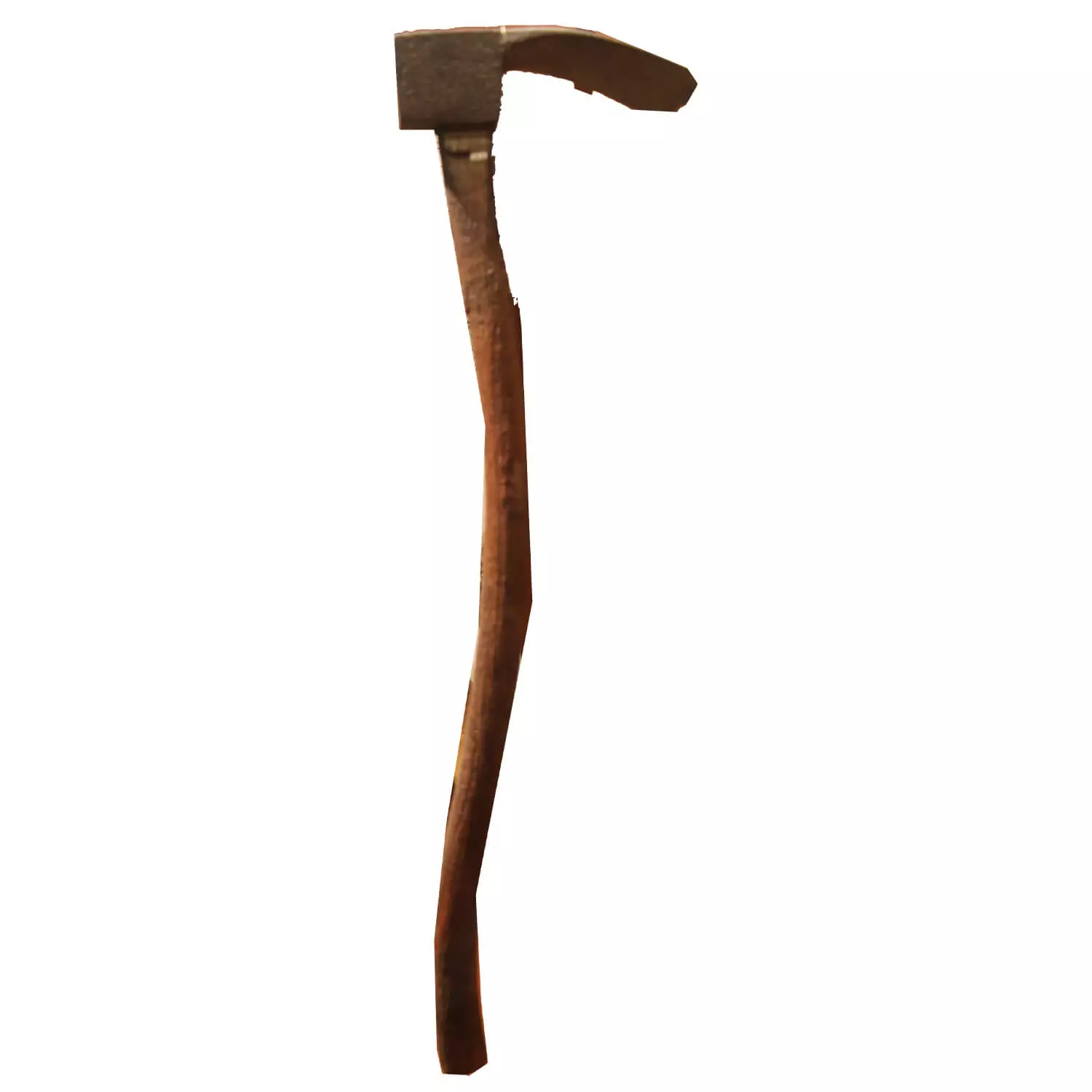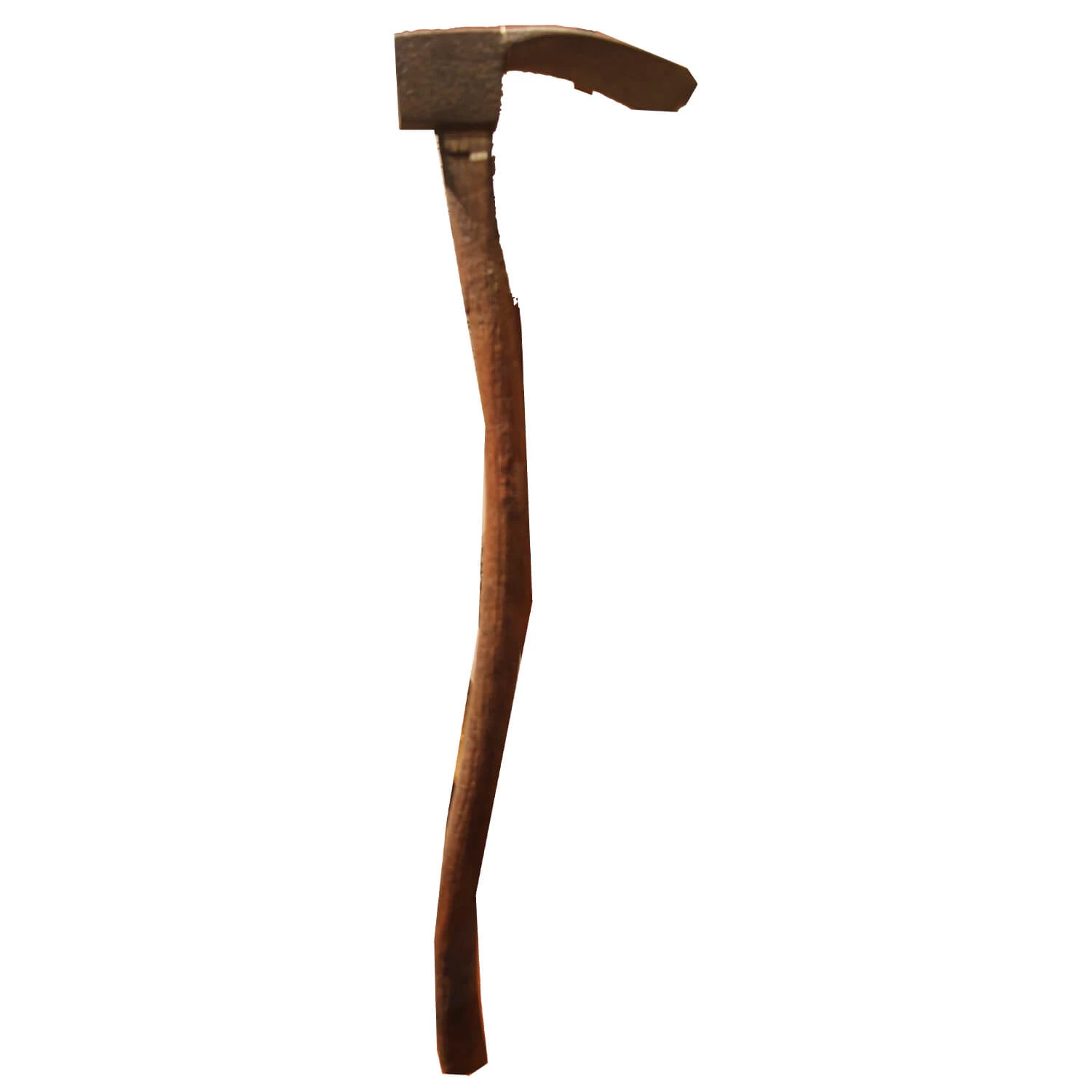Our Rich Land – Frontier Resources
Native people had farmed this area for thousands of years when McLean County’s first white settlers arrived in 1823. The settlers paid $1.25 per acre — the federal price for Illinois land. They came with the desire to make a living raising crops and livestock.
Advertisements in local and regional newspapers touted the richness of the land, especially to potential farmers.
Because farming was their livelihood and they had access to the resources of the land, the early settlers had the benefit of being somewhat self-sufficient. Some gardened, planted orchards, and butchered their own meat.
Those who purchased prairie faced the extremely difficult task of breaking the land. But once plowed, they found that the nutrient-rich soil produced abundant crops.
Robert Stubblefield arrived in McLean County with his family in 1824. He recalled that when they began to open their first 10 acres of land, the prairie soil was hard to break — taking five yoke of oxen to pull a plow.
John Weedman and his brother-in-law Jacob Bishop arrived in Randolph Township in 1830.
They purchased a team of oxen and made a business of breaking prairie.
Frontier farmers started with nothing but the raw resources they found where they settled.
The savannahs (areas adjacent to timber) were easy to plow, and the timbers provided the necessary wood for building homes, sheds, and fences, as well as firewood to heat the home and for cooking.
Frontier farmers got to work using the tools they brought with them.
Constructed from hand cut and shaped local timber, the John Patton log cabin illustrates how necessary raw resources and survival skills were to frontier life.
The cabin, located near Lexington, is one of the first and only remaining cabins from McLean County’s settlement period.
Surveying compass, circa 1830

View this object in Matterport
McLean County's earliest farmers arrived before the area had been surveyed. John Hendrix and John Dawson, McLean County's first farmers, squatted on the land until it had been surveyed. Once the land had been surveyed (1833), settlers staked their claims, then rode to Springfield where the claim was recorded and secured with a $100 down payment.
Donated by: Mary Evans
775.207
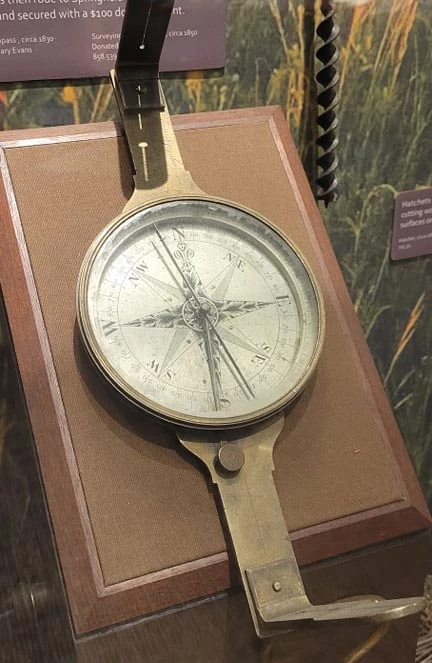
Surveying chain and pins, circa 1850
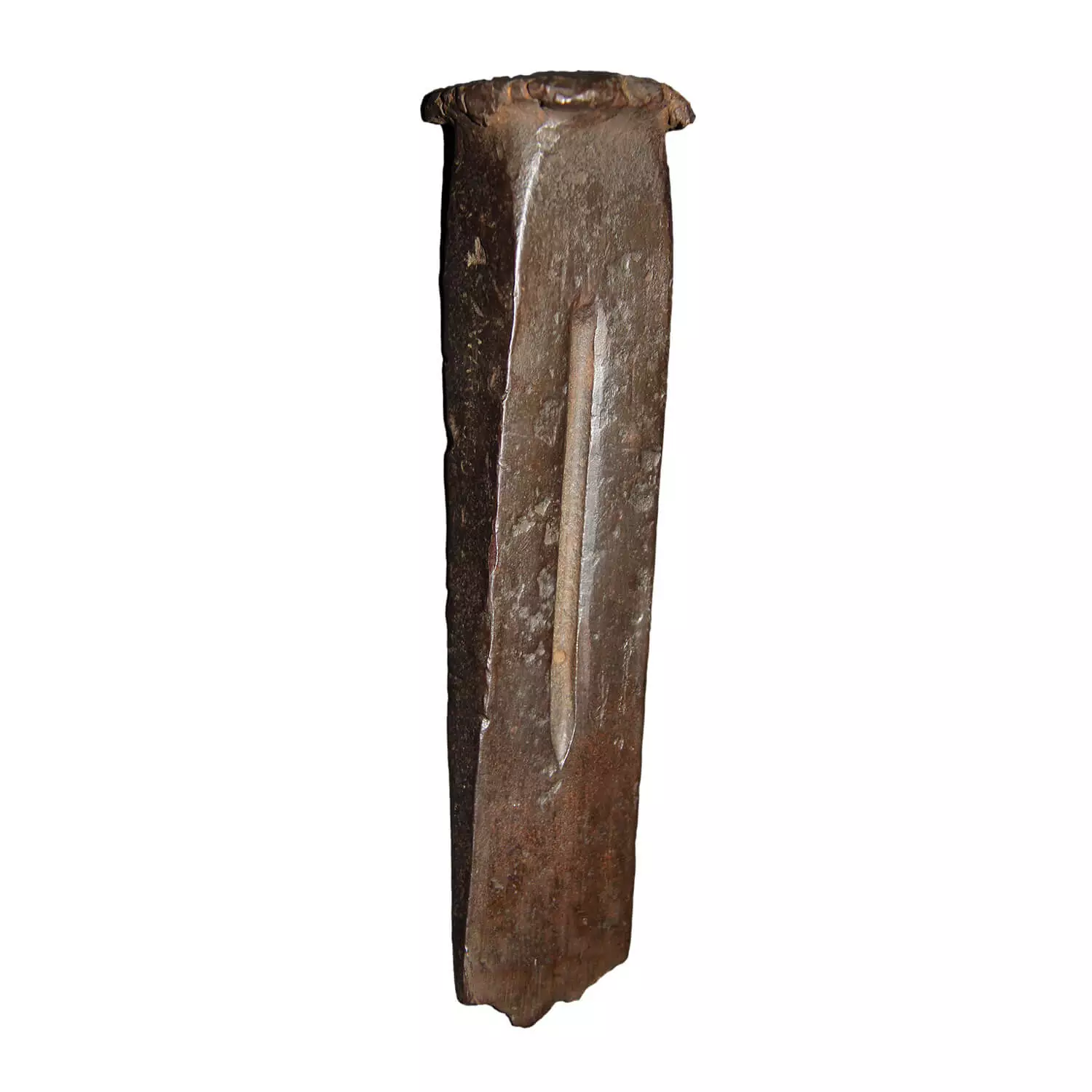
McLean County’s earliest farmers arrived before the area had been surveyed. John Hendrix and John Dawson, McLean County’s first farmers, squatted on the land until it had been surveyed. Once the land had been surveyed (1833), settlers staked their claims, then rode to Springfield where the claim was recorded and secured with a $100 down payment.
Donated by: C.A. Harper
858.539
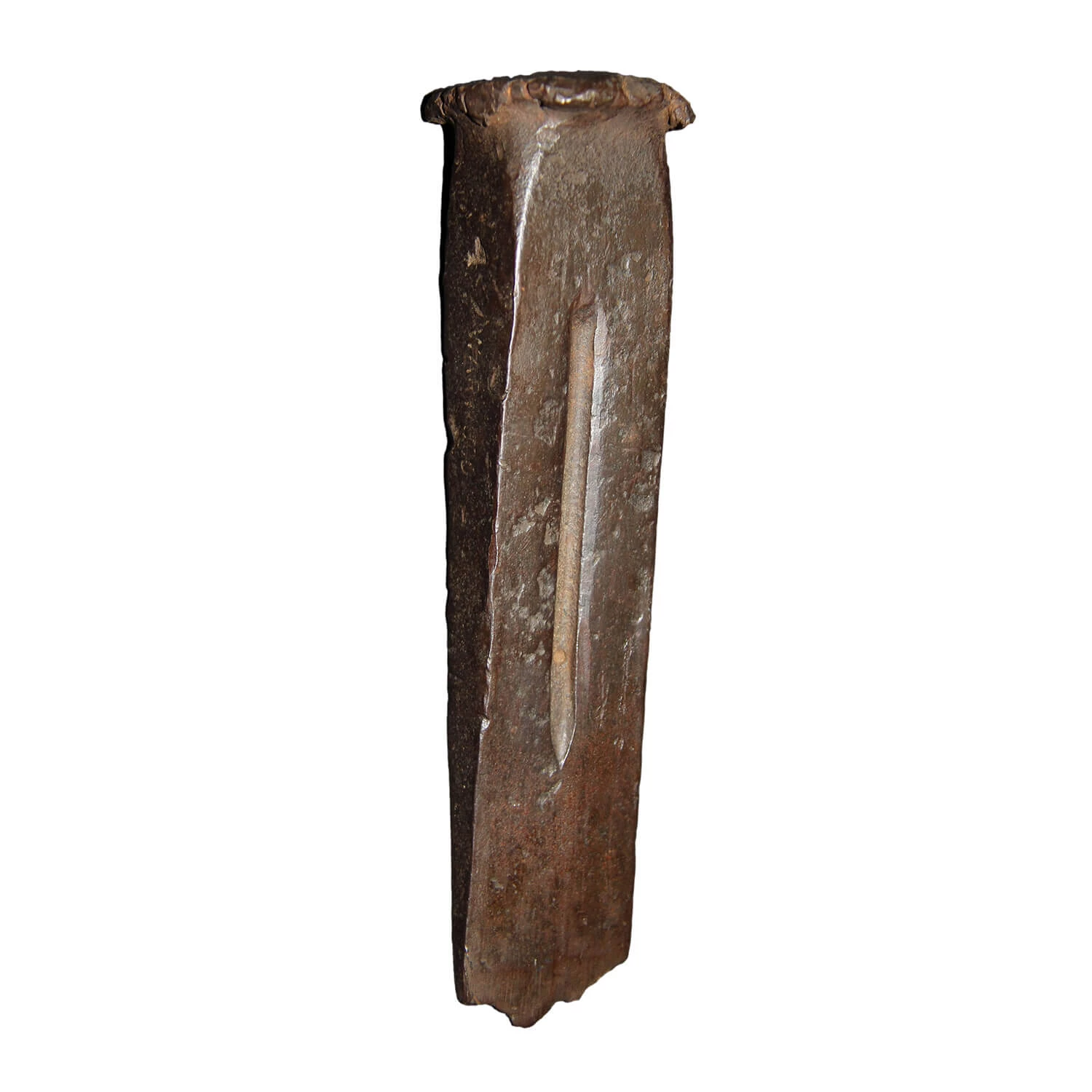
 Making a Home
Making a Home
 A Community in Conflict
A Community in Conflict
 Working for a Living
Working for a Living
 Farming in the Great Corn Belt
Farming in the Great Corn Belt
 Abraham Lincoln in McLean County
Abraham Lincoln in McLean County
